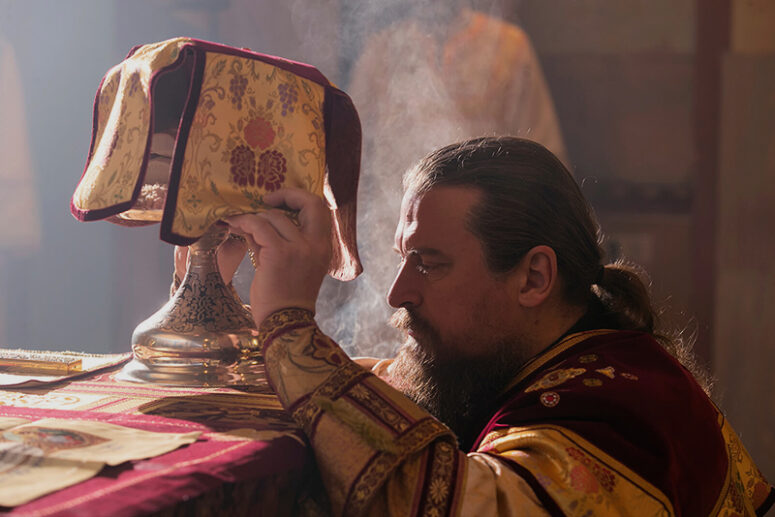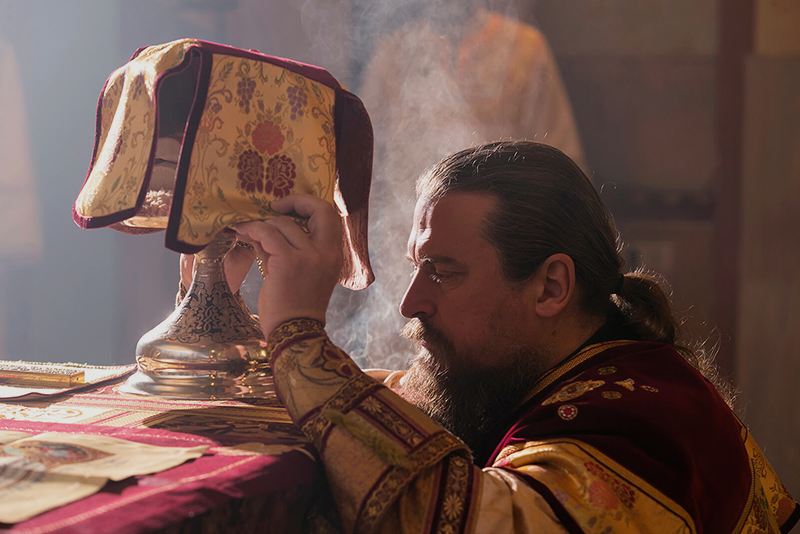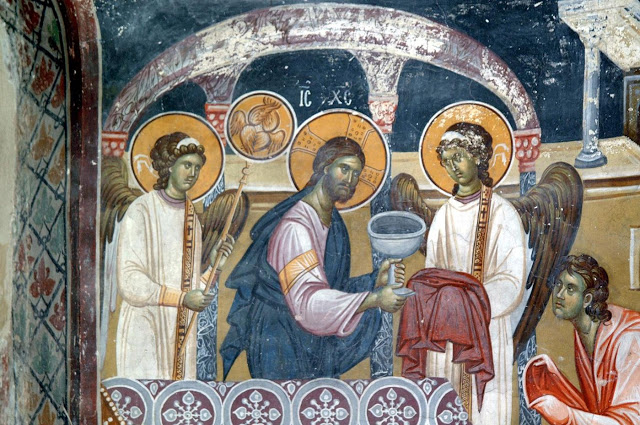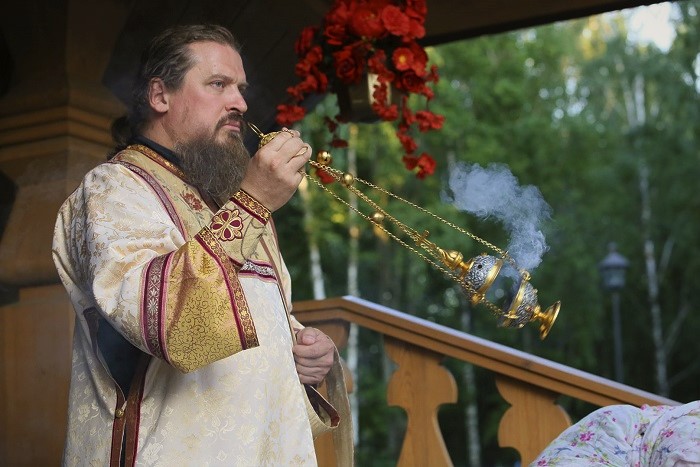
After the communion of the Holy Mysteries of Christ, the service passes onto a separate stage, taking place at the end of the Liturgy. This is the thanksgiving part of the Eucharist (interestingly, the Greek εὐ-χᾰριστία also means thanksgiving). It is offered by the faithful who were considered worthy of receiving the Holy Communion. It is also succeeded by an additional rite of thanksgiving prayers offered at the end of the Liturgy as a follow-up to the order of preparation, read the day before. Let us briefly describe these three main components of thanksgiving praise, established in the Byzantine rite of the Liturgy.
Let our Mouths be Filled
The Byzantine chant “Let our mouths be filled…” is a textual reworking and an expanded paraphrase of Psalm 71, verse 8 (“My mouth is filled with your praise, and with your glory all the day”). Similar chants, based on the same verse, are met not only in the Byzantine rite, but also in the Jerusalem, Syrian and Coptic liturgical traditions (Mateos, Un horologion inédit de St.-Sabas: Le Codex sinaïtique grec 863 P. 55; Taft , Precommunion. P. 278-288), which indicates that all these rites were inspired by the same biblical hymnographic material.
According to the Chronicon Paschale (Chron. Pasch. Col. 1001), this chant entered the Constantinople liturgical practice in 624 under Patriarch Sergius (hence the occurrent attributing the chant to him). However, at that time the chant was forming a logical connective with the whole eucharistic psalm, serving as its perission (περισσή – redundant), an additional troparion, attached to the Byzantine antiphons. Knowing these nuances helps clarify some other details connected with the final part of the service. In particular, they explain the singing of Alleluia after this hymn, as well as the concise exclamation “Both now and ever, and unto the ages of ages” read by the priest when blessing the congregation with the Chalice. Earlier, the eucharistic psalm ended with a small doxology and the singing of Alleluia (as happens when reading kathisma), however, as the Byzantine liturgy was becoming more complex, the psalm was reduced to its eucharistic verse. The doxology also lost its first part, while the singing of Alleluia was moved to succeed the hymn “Let our mouths be filled…” As a result, with the missing psalm, the abridged priestly exclamation was no longer perceived as its final doxology and was prefaced with the quiet words “Blessed be God” pronounced in an undertone.
It is noteworthy that a tradition existed for some time in Russia allowing the text of the chant “Let our mouths be filled…” to be changed arbitrarily. This is explained by the mere absence of communicants, related to the practice of the rare communion among the laity, where the choristers would change the words “For you have permitted us to partake…” to “For you have permitted him (the priest) to partake…” Such changes were noted and condemned in the literary works of the 16th century (Krasnoseltsev, p. 102, priest Mikhail Zheltov).
Thanksgiving Litany and Prayer
Many liturgical rites have dedicated thanksgiving prayers, read immediately after Communion, in which the faithful thank God for vouchsafing them to partake of the Holy Eucharist and thereby of Christ Himself. In Western rites, the prayer of thanksgiving (postcommunio) is changeable, hence the large number of thanksgiving prayers to be found in the ancient Sacramentaries and modern Missals, depending on the celebrated event. In the East (in the Syrian and Mesopotamian rites), the prayer of thanksgiving is preceded by the deacon’s acclamation “Arise!”, which means “Stand up straight; be attentive!” In Jerusalem and Constantinople a whole litany of thanksgiving is added, while, according to the modern version of the Chrysostom liturgy, the prayer is presently read “secretly” (in the altar) by the deacon and takes place after the communion of the clergy.
It should be noted that in the XIX century Orthodox service books the thanksgiving prayer was placed immediately after the communion of the clergy and before the communion of the laity. It was meant for convenience, but resulted in it being largely isolated from the litany itself and the final exclamation. This obvious flaw has been corrected in the present-day Greek editions of the Service Book (̓Αρχιερατικόν. Σ. 53), but the Russian post-19th-century editions still place the prayer before the communion of the laity, which the liturgists (priest Mikhail Zheltov) recognize as incorrect, since it expresses gratitude of the entire congregation rather than the clergy alone. The modern practice of commissioning this prayer to a deacon may also be viewed as controversial, since all liturgical prayers must be read by a bishop or priest, as the primate of the Eucharistic assembly. This is also confirmed by the fact that the last prayer of thanksgiving, namely the prayer “O Christ, our God, Who art Thyself the fulfilment of the Law and the Prophets,” is read by the primate, and not by the deacon consuming the holy gifts.
Thanksgiving Prayers
The third step in thanksgiving to God for Communion of the Holy Mysteries is the actual thanksgiving prayers, read after the dismissal. At present, there are only five thanksgiving prayers (four to Christ and one to the Mother of God). However, other ancient prayers have been found in the pre-Nikon service books. Many Christians prefer to say these thanksgiving prayers at home, since they are usually read during the veneration of the cross, which may create a certain rush. A possible (yet not the only) option would be reading these prayers in silence and only then proceeding with the dismissal, but this would make the already-long service longer.
Finally, another interesting detail is that the thanksgiving prayers have “consumed” the divesting rite of the clergy. It includes “Now you are letting your servant…”, the introductory prayers (Trisagion through “Our Father…”) and the troparions to the compiler of the service. Presently, the tradition of divesting the clergy of the holy vestments while reading these prayers is preserved only during the hierarchical service.




